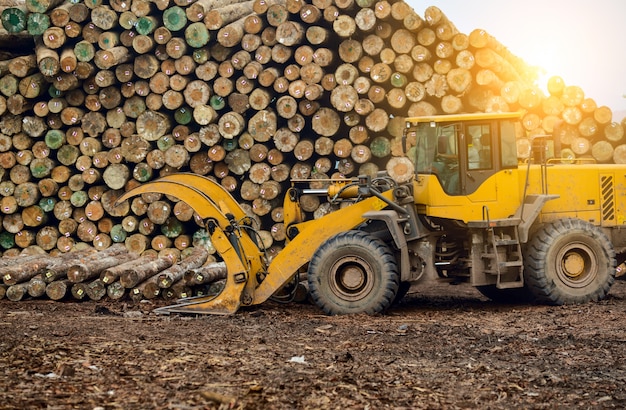How Logging Works: The Basics Of Deforestation

Table Of Contents
Do you know what happens when a tree falls in the woods? Perhaps you answered, “Nobody runs and gets a saw.” But if no one logs it, what then? Without logging, many forests quickly become overgrown and risk biodiversity.
Other forests become unusable as they get taken over by fast-growing weeds. When a tree falls in the woods, someone must get it out of there. Thus, logging affects a forest’s life.
If you are interested in logging in but have no idea how it works, this is the article for you. Read on to learn about how logging works and how it affects us.
The Basics of Deforestation
Deforestation is the removal of forests by whatever means. The cause of deforestation is conversion to other land uses, such as farmland and pasture. Other causes include forest fires, logging, and mining.
It is a very controversial issue, as there are many who believe that forests are essential to the environment and should be preserved. But, there are also many who feel that deforestation is necessary for development and progress.

How Logging Works
Trees are usually cut down for many reasons, such as clearing land for agriculture or grazing, harvesting trees for lumber or paper, or making way for urban development.
The logging process is the cutting of trees from an area where they are not wanted for many reasons, such as clearing land for agriculture or removing timber for the logging industry.
The process usually begins with a feller buncher, a machine that cuts the tree at its base and then holds it until it can be easily removed by a skidder or tractor.
Click here to get more information on how this is easily done by a rotating grapple.

The Consequences of Deforestation
Deforestation has many consequences, including declining biodiversity, soil erosion, and changing local climates. One of the most significant consequences of deforestation is the loss of carbon dioxide storage. Trees and other plants remove carbon dioxide from the atmosphere and store it in their leaves, stems, and roots.
When forests are already cleared, this carbon dioxide is released back into the atmosphere, leading to climate change. The loss of trees can lead to soil erosion and a loss of habitat for many animals. Deforestation is one leading cause of climate change. It is because trees play a crucial role in the carbon cycle.
The consequences of deforestation can be damaging to the environment.

How We Can Prevent Deforestation
There are ways to prevent deforestation, such as through sustainable logging practices, reforestation, and afforestation. If we all work together to reduce our impact on the planet, we can help prevent deforestation and ensure a healthy future for our planet.
We can support responsible forestry practices, promote the use of sustainable materials, and advocate for policies that protect forests.

Solutions to Deforestation
One must first understand the basics of deforestation. Deforestation is the removal of forests by whatever means.
Logging can have an impact on the environment, both positive and negative. So, it is vital to be informed about the potential consequences of deforestation before engaging in one.
Do you want to know more about the environment and good practices? Check out more of our guides and news articles here.
Additionals:
You May Also Like

September 3, 2022
The Subtle Signs Of Elder Abuse: What To Look For

July 7, 2022
Why Are Firearms So Popular In America?

September 19, 2022






















